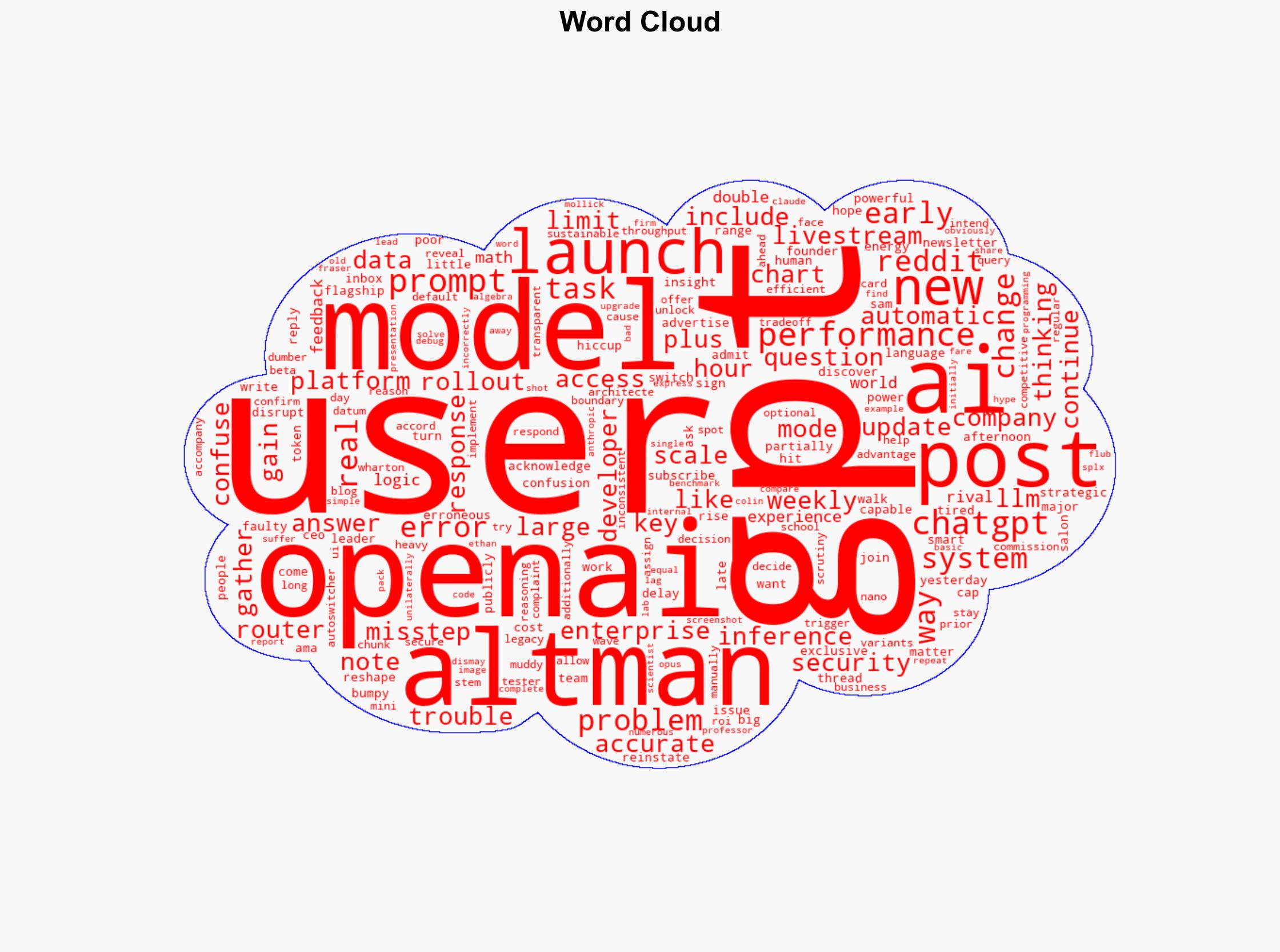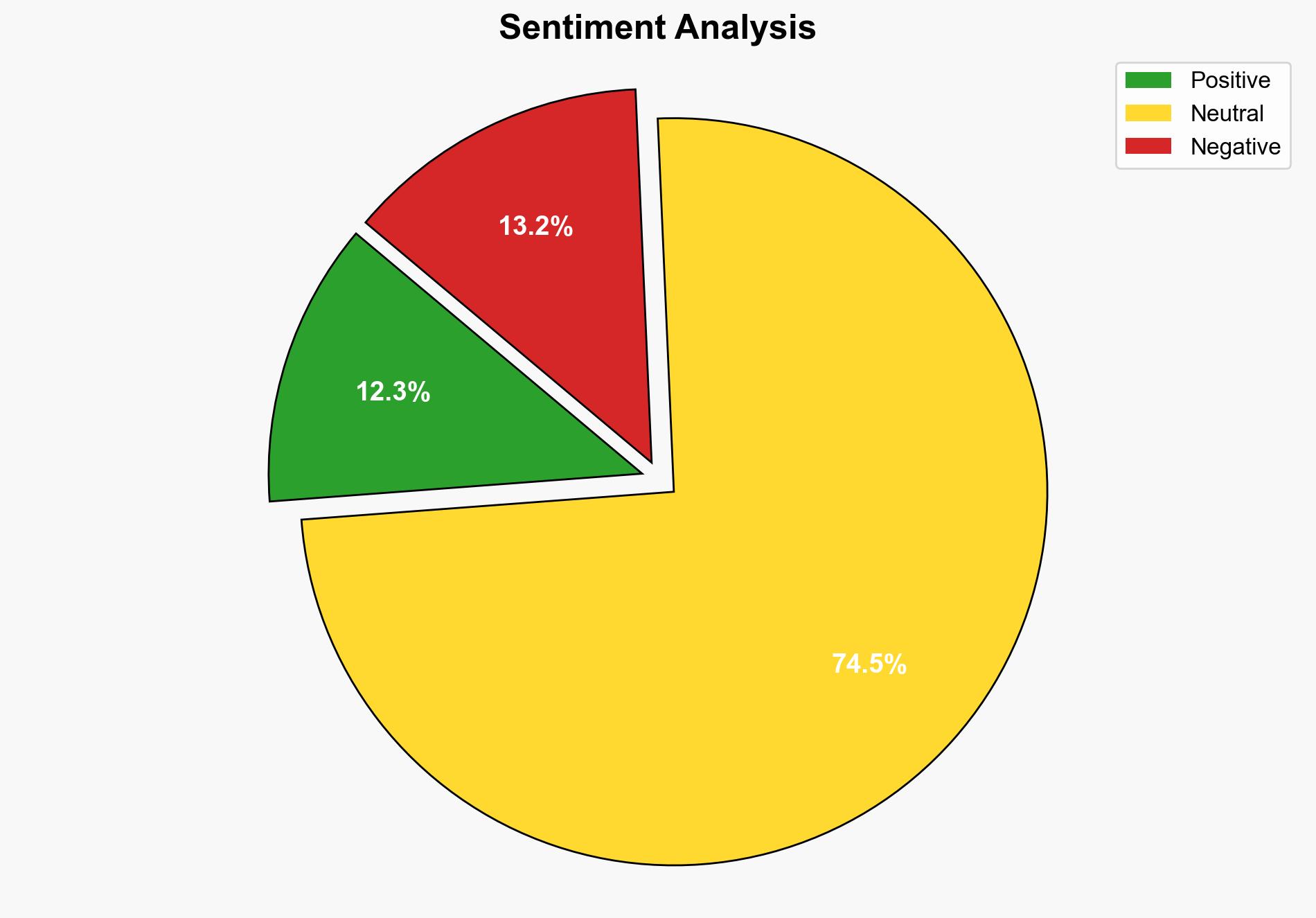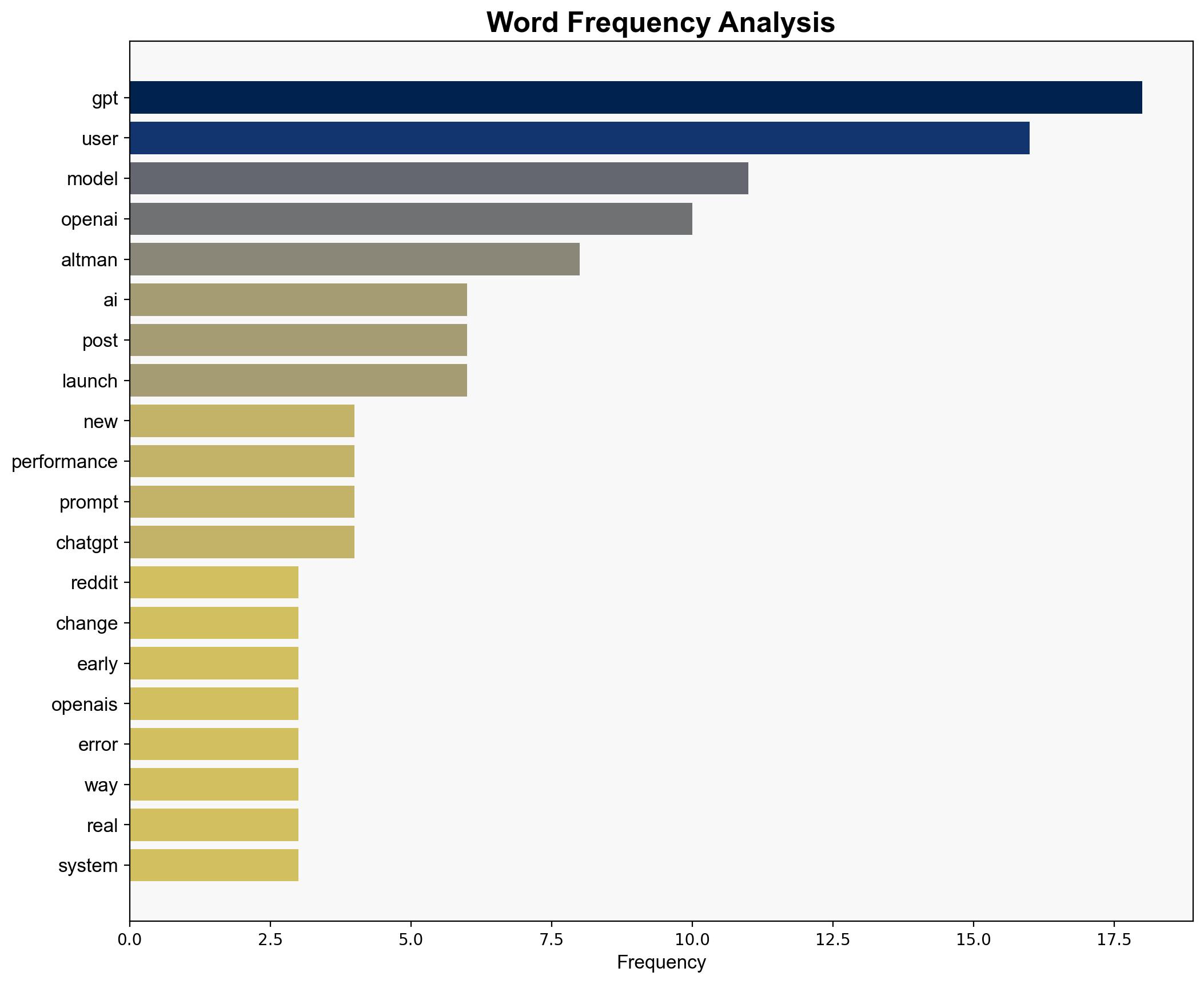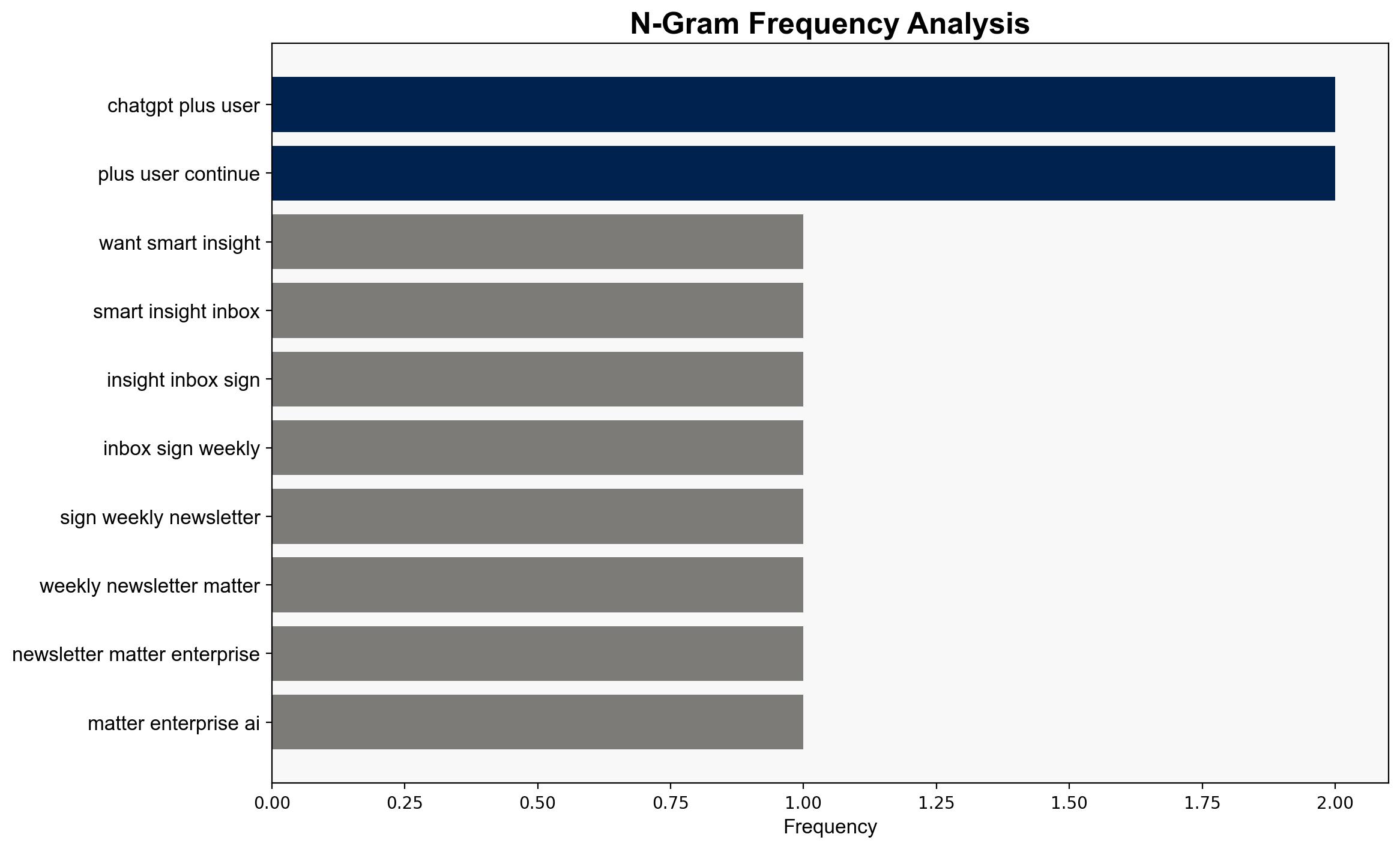OpenAI returns old models to ChatGPT as Sam Altman admits bumpy GPT-5 rollout – VentureBeat
Published on: 2025-08-08
Intelligence Report: OpenAI returns old models to ChatGPT as Sam Altman admits bumpy GPT-5 rollout – VentureBeat
1. BLUF (Bottom Line Up Front)
The rollout of OpenAI’s GPT-5 faced significant challenges, leading to the reinstatement of older models. The most supported hypothesis is that the issues stem from technical missteps and inadequate testing of the new model-switching system. Confidence in this assessment is moderate. Recommended action includes enhancing transparency in model updates and improving pre-launch testing protocols.
2. Competing Hypotheses
1. **Technical Missteps Hypothesis**: The problems with GPT-5’s rollout are primarily due to technical errors and insufficient testing of the new model-switching system, leading to performance issues and user confusion.
2. **Strategic Diversion Hypothesis**: OpenAI’s decision to revert to older models and highlight issues could be a strategic move to manage user expectations and gather data on model performance under real-world conditions.
Using ACH 2.0, the Technical Missteps Hypothesis is better supported by the evidence of specific technical issues such as the faulty model switch and user reports of performance inconsistencies. The Strategic Diversion Hypothesis lacks direct evidence and relies on speculative reasoning.
3. Key Assumptions and Red Flags
– **Assumptions**: It is assumed that OpenAI’s technical team did not anticipate the scale of issues with the new model-switching system. Another assumption is that user feedback is a reliable indicator of model performance.
– **Red Flags**: The lack of detailed information on internal testing processes and the decision-making behind the rollout strategy is a red flag. Additionally, the absence of specific metrics on performance issues raises questions.
4. Implications and Strategic Risks
The rollout issues could impact OpenAI’s reputation and user trust, potentially affecting its market position. If unresolved, these technical challenges might lead to increased scrutiny from competitors and stakeholders. There is also a risk of reduced user engagement if performance issues persist.
5. Recommendations and Outlook
- Enhance transparency in communication regarding model updates and performance metrics to rebuild user trust.
- Implement rigorous pre-launch testing protocols to prevent similar issues in future rollouts.
- Scenario-based projections:
- Best Case: Rapid resolution of technical issues and improved user satisfaction, leading to a strengthened market position.
- Worst Case: Ongoing technical challenges result in significant loss of user base and competitive edge.
- Most Likely: Gradual improvement in performance with sustained user feedback and iterative updates.
6. Key Individuals and Entities
– Sam Altman
– Ethan Mollick
– Colin Fraser
7. Thematic Tags
artificial intelligence, technology rollout, user experience, corporate strategy





